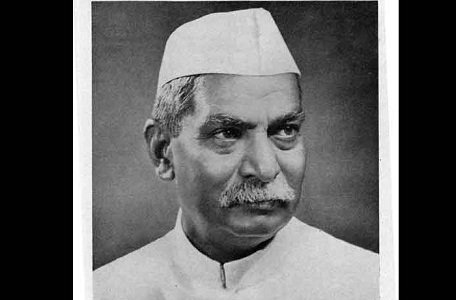Rajendra Prasad was the first President of the Republic of India. He was born 3rdDecember 1884. He was actively involved in Indian independence movement and one of the key leader who joined Indian National Congress from the Bihar region. He did Post Graduate in Law and strong follower and supporter of Mahatma Gandhi. He was imprisoned with Mahatma Gandhi by the Britishers during participation in Salt Satyagraha movement and Quit India Movement held in the year 1931 and 1942 respectively.
He was also served as President of Indian National Congress from the year 1934 to 1935. He was served as Minister of Food and Agriculture in the Central Government after the elections in 1946. For his contribution to the nation, he was honored with nation most prestigious award i.e. Bharat Ratna award. There are a number of lesser known facts about Dr Rajendra Prasad. Here is the list of top 10 interesting facts about our first President.

10. Introduction of Early Life
Dr Prasad was born on 3rd December 1884 in a Kayastha family in Zeradai village of Siwan district in Bihar. He was the meritorious student and love all religions equally. Therefore, he mixed up with both his Hindu and Muslims friends easily. He was married in his early age with Rajvanshi Devi when he was just 12 years old due to old traditions of villages at that time.
9. Academic Intelligence
Rajendra Prasad was a brilliant student during his school and college time. He stood first in the Calcutta University examination. Due to this, he got a scholarship of Rs 30 per month and joined famous Calcutta Presidency College in the year 1902. He was so intellectual that once in an exam, examiner commented on his sheet that “Examinee is better than the Examiner”.
8. Scarification for family and Education
He sacrificed a lot in his life for family and education. In the year 1905, he called by Gopal Krishna Gokhale to joined Indian Society but due to his commitment and responsibilities towards his family and education, he politely refused albeit painfully. Dr Prasad called it as a miserable situation and due to this first time his performance degraded in academia and he just passed his law exams.
7. Public engagement
He was actively involved in various Public engagements. In the year 1906, he was very instrumental in the formation of Students Conference for Biharis. This was one of the different and unique group of its kind and give some prominent leaders to the society from Bihar like Sri Krishna Sinha, Dr Anugrah Narayan etc. He was also the key member of Dawn Society and President of Bihar Chahatra Samelan in the year 1913.
6. Role in Champaran Movement
He was the strong follower and deeply inspired by Mahatma Gandhi. He was little skeptical initially but when he saw that a simple man Gandhi ji was helping people of Champaran village in Bihar without any vested interest, he did not stop himself to jump in this movement. He gives full support to Gandhi ji in the famous Champaran movement.
5. Philanthropic Nature and Service to Nation
Dr Prasad was very humanitarian and kind hearted person. He volunteered actively during the floods in Bengal and Bihar in the year 1914. Similarly, after the earthquake and flood in Bihar in the year 1934, malaria spread, he actively involved himself in distributing clothes, medicines, and food to the victims.
4. Impact of Gandhiji in his life
Gandhiji had a deep and profound effect on Dr Prasad life. He was the strong follower of his views on untouchability and caste. He was so much inspired by Mahatma Gandhi that he cut short his staff to 1 and did his tasks by own like Floor cleaning etc. Gandhi was the main factor of Dr Prasad involvement in Indian freedom struggle.
3. Role in Salt Satyagraha Movement
Dr Rajendra Prasad was the active member during the Salt Satyagraha movement launched in the year 1930. He was made the head of Bihar state for this movement and raise funds by sold salt. He was arrested faced imprisonment for 6 months for breaking the law and order.
2. Involvement in Indian National Congress
He was served as president of Indian National Congress (INC) from 1934 to 1935. He chaired the 1934 Bombay session and 1939 Jabalpur session of INC when Subhas Chandra Bose left. He worked hard to remove the rift between Mahatma Gandhi and Subhas Bose.
1. Contribution in Indian independence and post-independence
His contribution in Indian independence, as well as post-independence, was immense. In the year 1946, he served as Minister of Food and Agriculture. Post independence, he was elected as the President of Indian Constituent assembly. During his tenure, he visited various foreign countries to build a good and strong nation rapport of India.
Santosh Kumar is a Professional SEO and Blogger, With the help of this blog he is trying to share top 10 lists, facts, entertainment news from India and all around the world.
